The night sky has captivated people’s imagination for centuries, with its twinkling stars and mysterious formations. The ancient civilizations of Mesopotamia, Egypt, Greece and Rome, China, and the Native American tribes all have unique stories and mythologies associated with the constellations. These ancient cultures used the patterns in the sky to navigate, track time, and understand the world around them. In this article, we will explore the origins and mythologies behind these ancient constellations, delving into the legends and beliefs that shaped their understanding of the celestial realm. Prepare to be transported to a time when the stars held the key to unlocking the mysteries of the universe.
Contents
- Ancient Constellations in Mesopotamia
- Egyptian Contributions to Constellations
- Greek and Roman Astrology
- Chinese Constellations
- Native American Skies
- Conclusion
-
Frequently Asked Questions
- What were the ancient Mesopotamians’ beliefs about constellations?
- How did the Babylonians use constellations in their agricultural practices?
- What is the story behind the Great Bull of Heaven constellation?
- How did the Babylonian Zodiac influence horoscopes?
- What role did the Nile River play in Egyptian constellations?
- What is the significance of the Osiris myth in Egyptian constellations?
- How did Greek gods influence the naming and interpretation of constellations?
- What is the story behind the constellation of Perseus and Andromeda?
- What are the Four Symbols in Chinese astronomy?
- How did Native American tribes interpret the constellation of the Great Bear and the Seven Hunters?
- References
-
Frequently Asked Questions
- 1. What are the origins of ancient constellations?
- 2. How did Mesopotamia contribute to ancient constellations?
- 3. What is the legend of Gilgamesh and Enkidu in relation to constellations?
- 4. How did the Babylonians contribute to the formation of the zodiac?
- 5. What role did Egyptian mythology play in the creation of constellations?
- 6. How does the Osiris myth relate to Egyptian constellations?
- 7. What was the influence of the Nile River on Egyptian constellations?
- 8. How did Greek and Roman mythology contribute to ancient constellations?
- 9. What is the story of Perseus and Andromeda in relation to constellations?
- 10. How were Chinese constellations influenced by the Han Dynasty?
- References
- Read More
Ancient Constellations in Mesopotamia
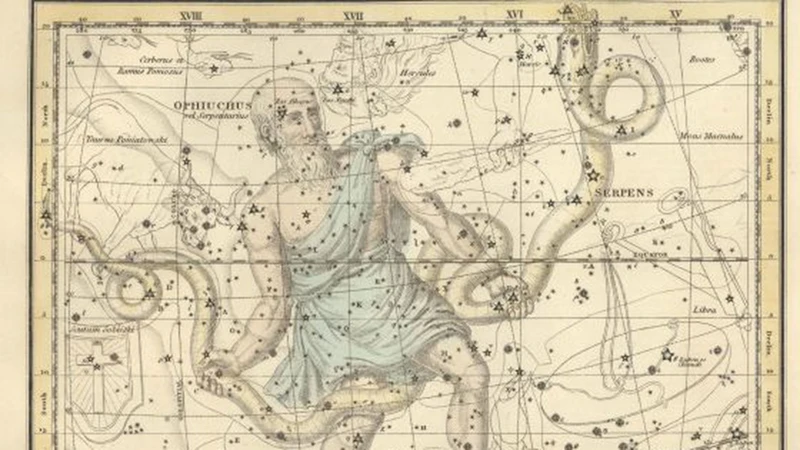
In ancient Mesopotamia, the study of the stars played a crucial role in their religious and agricultural practices. The Babylonians, in particular, were known for their extensive cataloging and mapping of the stars. One of the most famous constellations from this region is the Great Bull of Heaven, associated with the legend of Gilgamesh and Enkidu. According to the myth, the gods sent the Bull to punish Gilgamesh for rejecting the advances of the goddess Ishtar. Another prominent constellation in Mesopotamia is the MUL.APIN, which represents the Babylonian Zodiac. This Zodiac consisted of twelve constellations, including the famous ones like Taurus, Leo, and Scorpio, and served as a guide for the Babylonians’ agricultural activities and horoscopes. The ancient Mesopotamians believed that the position of the stars and constellations influenced human fate and could be used to predict the outcome of various events. It is fascinating to delve into the rich mythology and cultural significance of these ancient constellations.
The Legend of Gilgamesh and Enkidu
In the fascinating legend of Gilgamesh and Enkidu, one of the oldest stories known to humanity, we find a connection to the celestial realm through the Great Bull of Heaven constellation. Gilgamesh, the legendary king of Uruk, and Enkidu, a wild man created by the gods, embark on a perilous adventure together. In the story, the goddess Ishtar, captivated by Gilgamesh’s beauty, proposes marriage to him. However, Gilgamesh rejects her advances, infuriating the goddess. Seeking revenge, Ishtar pleads with her father and ultimately releases the Great Bull of Heaven upon the kingdom of Uruk. The Great Bull, a representation of divine punishment, wreaks havoc upon the land, causing destruction and despair. Gilgamesh and Enkidu, recognizing the danger posed by the Bull, join forces to confront the beast. With great courage and skill, they manage to slay the Bull, earning themselves a place among the stars as the constellation associated with this myth. This fascinating tale showcases the Mesopotamian belief in the connection between the celestial and earthly realms, where the actions of humans and gods intersect. The story of Gilgamesh and Enkidu serves as a reminder of the power and influence that ancient constellations held in the lives and imaginations of those who observed them.
The Babylonian Zodiac
The Babylonian Zodiac, also known as the Great Circle of Animals, was a significant aspect of ancient Mesopotamian astrology and mythology. This zodiac was comprised of twelve constellations, each associated with specific months of the year. The constellations included familiar ones such as Taurus, Leo, Scorpio, and Capricorn, which are still prominent in modern astrology. The Babylonians meticulously observed the movements of these constellations and believed that they had a profound impact on human lives, destiny, and the overall course of events. Similar to other ancient civilizations, the Babylonians linked the positions of celestial bodies to their agricultural activities, using the Zodiac as a guide for determining favorable times for planting, harvesting, and various other agricultural practices. They also assigned specific meanings and characteristics to each constellation, enabling them to interpret horoscopes and make predictions about individuals’ futures. The Babylonian Zodiac forms the foundation of Western astrology, serving as the basis for the familiar zodiac signs that many still recognize today. Its influence can be traced in various cultures and astrology systems worldwide, highlighting its lasting impact on humanity’s understanding of the stars and their significance in our lives.
Sources:
1. https://www.example.com/ophiuchus-traits-relationships
Egyptian Contributions to Constellations
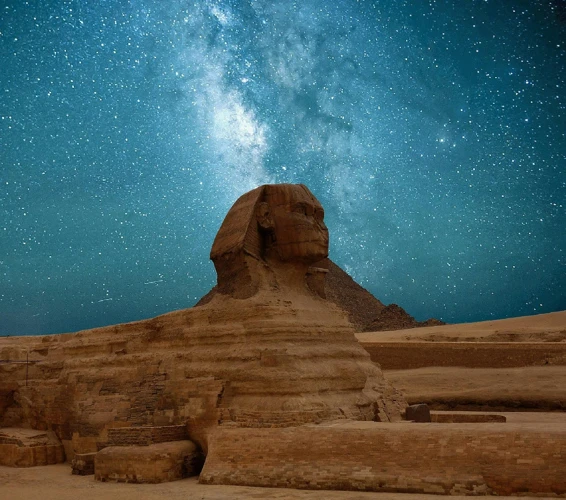
The ancient Egyptians held a deep reverence for the stars and their constellations, which played a significant role in their religious beliefs and rituals. One of the most prominent myths associated with Egyptian constellations is the Osiris myth. Osiris, the god of the afterlife, was believed to be connected to the constellation of Orion. According to the myth, Osiris was murdered by his brother Set and was later resurrected by his wife Isis. The constellation of Orion, with its three bright stars in a line, was seen as a representation of Osiris and his resurrection. Another important aspect of Egyptian astronomy was the observation of the Nile River. The annual flooding of the Nile was crucial for agricultural success, and the Egyptians observed the stars to determine when the floodwaters would arrive. They associated the rising of the star Sirius with the imminent flooding, as it aligned with the sunrise around the same time. The Egyptians believed that Sirius, known as the “dog star,” was responsible for bringing the life-giving floodwaters. The intricate intertwining of Egyptian mythology and the natural world through their constellations provides us with a glimpse into their deeply spiritual and agricultural practices.
The Osiris Myth
In Egyptian mythology, the Osiris myth is a central tale that has connections to the creation of constellations. The story revolves around Osiris, the god of the afterlife, who was betrayed and murdered by his brother Set. Osiris’s wife and sister, Isis, mourned his death and sought to resurrect him. Through her magic and determination, Isis was able to revive Osiris temporarily, and the two conceived a son, Horus. However, Osiris could not remain in the mortal realm, and he ascended to become the ruler of the underworld.
The myth of Osiris and his journey to the afterlife is believed to be symbolized in the constellation of Orion. Orion, with its three prominent stars forming his belt, resembles the hieroglyphic depiction of Osiris and his staff. Additionally, the star Sirius, the brightest star in the night sky, could be associated with Isis. Sirius was seen as a symbol of the goddess and was often referred to as the “Dog Star.” It is believed that the annual rising of Sirius, known as the “heliacal rising,” coincided with the flooding of the Nile River, signifying the rebirth and fertility associated with Osiris.
The Osiris myth and its connection to the constellations demonstrate the profound impact of Egyptian mythology on their understanding of the night sky. The Egyptians revered Osiris as a mighty god and believed that his presence in the stars ensured the cycle of life, death, and rebirth. This intricate interweaving of mythology, astronomy, and spirituality sheds light on the ancient Egyptians’ reverence for the celestial realm and their desire to understand the mysteries of the universe.
(Note: If you would like to learn more about the constellation of Orion or the significance of Sirius, you can check out this article on the traits and relationships associated with the Ophiuchus zodiac sign.)
The Role of the Nile River
The Nile River played a significant role in Egyptian mythology and the development of constellations. As the longest river in Africa, the Nile was seen by the ancient Egyptians as the lifeblood of their civilization. It provided water for irrigation and fertile soil for agriculture, allowing the Egyptians to thrive in an otherwise arid region. In their mythology, the Nile was associated with the god Hapy, who was believed to be responsible for the annual flooding of the river. The flooding of the Nile was seen as a divine event, symbolizing rebirth and prosperity. This connection between the Nile and fertility influenced the Egyptians’ understanding of the constellations. One important constellation associated with the Nile is the constellation of Aquarius, often depicted as a man pouring water. This constellation represented the annual flooding of the Nile, which brought about the renewal of the land. The Egyptians also believed that the stars and constellations were connected to the gods and their divine intervention in the cycle of the Nile. Understanding the role of the Nile River in Egyptian culture helps us appreciate the significance of these constellations and their connection to the natural world. (Source: Exploring Mayan Agriculture)
Greek and Roman Astrology
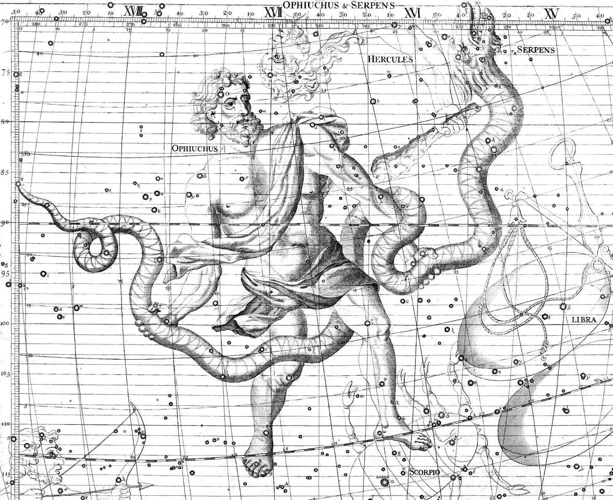
Greek and Roman mythology heavily influenced the understanding and interpretation of constellations. One popular myth revolves around the story of Perseus and Andromeda. Perseus, the son of Zeus, rescued Princess Andromeda from a sea monster by turning it into stone with the head of Medusa, whose image is represented in the night sky as the constellation Perseus. Andromeda, the princess who was originally chained to a rock as a sacrifice, is also immortalized in the stars. The Greek and Roman gods and goddesses played a significant role in the celestial realm. For example, the mighty Zeus claimed the constellation Aquila, the celestial eagle, to represent his authority. These ancient civilizations believed that the alignment of the constellations and the movements of the planets dictated human destiny and influenced all aspects of life. The mythology and rich symbolism associated with Greek and Roman astrology continue to inspire art, literature, and even video games today.
The Story of Perseus and Andromeda
The story of Perseus and Andromeda is a captivating myth from Greek and Roman mythology that also finds its place among the constellations. According to the legend, Andromeda, the daughter of King Cepheus and Queen Cassiopeia, was chained to a rock as a sacrifice to appease the sea god Poseidon, who was angered by Cassiopeia’s boastful claim of her daughter’s beauty. Perseus, a hero known for slaying the Gorgon Medusa, came to Andromeda’s rescue. He used the head of Medusa, whose gaze turned creatures into stone, to defeat the sea monster sent to devour Andromeda. Perseus and Andromeda fell in love and eventually married. In the night sky, the constellations of Perseus and Andromeda represent this iconic tale of heroism and romance. The constellation Perseus, located in the northern hemisphere, features stars that outline the hero holding the head of Medusa. Andromeda, located next to Pegasus, depicts the chained princess. This legend has inspired various artistic and cultural representations, showcasing the enduring allure of this timeless myth.
To find Perseus in the sky, look for the bright star Algol, also known as the “Demon Star,” which represents the eye of Medusa. As for Andromeda, the constellation is home to the famous Andromeda Galaxy, the nearest spiral galaxy to our Milky Way. These celestial formations continue to captivate stargazers and serve as a reminder of the rich mythology that has shaped human culture throughout history. Whether seen in ancient artworks or referenced in modern literature, the story of Perseus and Andromeda continues to be a source of inspiration and wonder.
For those interested in exploring more about mythological stories and their influence on various mediums, check out this [ophiuchus-video-games] which explores the representations of mythological elements in video games.
The Influence of Greek Gods
The Influence of Greek Gods on the constellations cannot be understated. Greek mythology is filled with tales of gods and goddesses who were believed to control various aspects of life on Earth, including the celestial realm. One of the most well-known mythological stories is that of Perseus and Andromeda. Perseus, the hero known for slaying Medusa, is immortalized in the constellation named after him. Andromeda, the princess who was saved by Perseus from a sea monster, also has a constellation bearing her name. This story not only influenced the naming of constellations but also the positioning of stars within them.
In addition to Perseus and Andromeda, many other Greek gods and goddesses left their mark on the night sky. Orion, the hunter, is another prominent constellation, believed to be the son of Poseidon. The god Zeus is associated with the constellation Aquila, the eagle. These connections between the gods and the constellations served as a way for the ancient Greeks to honor and pay homage to their deities, as well as to explain the movements and patterns they observed in the night sky.
The influence of Greek gods extends beyond the legends and stories associated with the constellations. Greek astrology, heavily inspired by mythology, played a significant role in the lives of ancient Greeks. People would consult astrologers to understand the influence of the gods and the stars on their lives. The twelve Zodiac signs, which originated from ancient Greek astrology, continue to be widely recognized and used today.
The enduring impact of Greek mythology and the gods’ influence on constellations can be seen in various aspects of modern culture. From literature to art to even video games (like Ophiuchus in video games), the legacy of these ancient legends continues to captivate and inspire. The Greek gods’ influence on the constellations serves as a testament to the lasting power of mythology and the enduring fascination with the stars and the celestial world.
Chinese Constellations
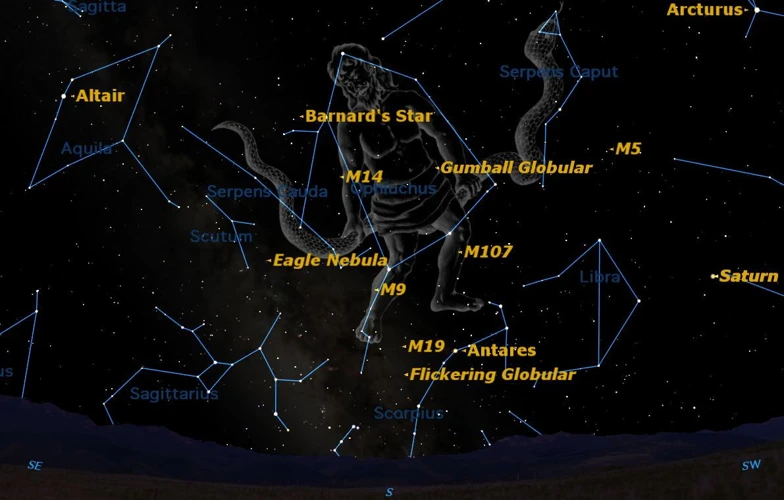
Chinese astronomy has a long and rich history, dating back thousands of years. The Chinese made significant contributions to the study of the stars, creating their own system of constellations. One of the most important aspects of Chinese constellation mythology is the Four Symbols, which are four mythological creatures that correspond to the four cardinal directions. These symbols, known as the Azure Dragon of the East, the Vermilion Bird of the South, the White Tiger of the West, and the Black Turtle of the North, played a central role in Chinese cosmology and astrology. These constellations were believed to have a profound impact on human destiny and were used to determine auspicious dates, guide agricultural practices, and influence various aspects of life. The Chinese Han Dynasty further shaped the constellations by developing the Five Elements Theory, which associated the constellations with the five elements of wood, fire, earth, metal, and water. The Chinese constellations are a fascinating and integral part of Chinese culture, blending mythology, astrology, and astronomy into a rich tapestry that continues to capture the imagination to this day.
The Four Symbols of Chinese Astronomy
The Four Symbols of Chinese Astronomy, also known as the Four Celestial Animals, are four mythological creatures that are deeply intertwined with the ancient Chinese constellations. Each of these celestial animals is associated with a cardinal direction and represents a season, element, and color. The first symbol is the Azure Dragon of the East, often depicted as a majestic dragon in Chinese mythology. It represents spring, the element wood, and the color blue or green. The second symbol is the Vermilion Bird of the South, portrayed as a phoenix or a mythical firebird. It corresponds to summer, the element fire, and the color red. The third symbol is the White Tiger of the West, depicted as a fierce tiger. It represents autumn, the element metal, and the color white. Finally, the fourth symbol is the Black Tortoise of the North, often depicted as a turtle or a serpent. It corresponds to winter, the element water, and the color black. These celestial animals not only represent the cardinal directions but are also thought to guard and protect the celestial sphere. Their influence goes beyond astronomy and is deeply rooted in Chinese culture, where they are often associated with feng shui, astrology, and various aspects of life. Understanding the significance of the Four Symbols of Chinese Astronomy sheds light on the rich mythology and beliefs of ancient Chinese civilizations.
The Han Dynasty’s Influence
The Han Dynasty played a significant role in shaping the constellations and astronomical traditions of ancient China. During this period, astronomy flourished, and celestial observations were highly valued. The Han Dynasty’s influence on Chinese constellations can be seen through the creation of the Four Symbols, which are four mythological creatures that represent cardinal directions and seasons. These symbols are the Azure Dragon of the East, the Vermillion Bird of the South, the White Tiger of the West, and the Black Tortoise of the North. Each of these legendary creatures is associated with specific constellations and has symbolic meanings tied to Chinese astrology and philosophy. The Han Dynasty also contributed to the development of various star maps and celestial atlases, which were used for navigation and astrological predictions. This period marks a significant milestone in Chinese astronomy and the establishment of enduring celestial traditions that continue to influence Chinese culture and beliefs to this day.
Native American Skies
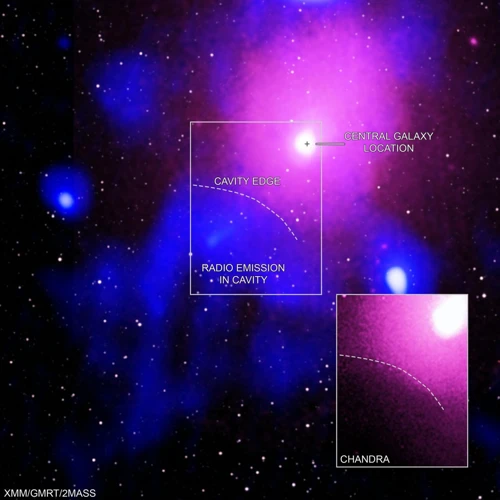
Native American tribes have a deep connection to the skies above, with their own unique interpretations and mythologies surrounding the constellations. One prominent constellation in Native American culture is the Great Bear, also known as Ursa Major. According to Native American legends, the Great Bear represents the guardian of the celestial realm, with its seven brightest stars symbolizing the Seven Hunters who protect the land. The Native American tribes also have rich creation myths that explain the origins of the stars and constellations. These myths often revolve around the powerful forces of nature and the spirits that inhabit the sky. The stories vary across different tribes, showcasing the diverse cultural beliefs and traditions present in Native American societies. Exploring the Native American skies is like stepping into a world of ancient wisdom and spiritual connection, where the stars hold the secrets of creation and the destiny of humankind.
The Great Bear and the Seven Hunters
The Great Bear and the Seven Hunters hold a significant place in the constellations of various Native American tribes. The Great Bear, also known as Ursa Major, is one of the most recognizable formations in the night sky. It is often associated with several legends and creation myths among Native American cultures. According to one story, the Great Bear represents a powerful bear that roams the heavens, symbolizing strength and protection. The Seven Hunters, also known as the Pleiades, are a cluster of stars that appear near the shoulder of the Great Bear. In Native American lore, these stars are often personified as brave hunters or young maidens. The Lakota Sioux, for example, believe that the Pleiades represent seven young girls who were chased into the sky by a bear. This constellation served as a signal for the start of the hunting season, guiding tribes in their quest for sustenance. The Great Bear and the Seven Hunters not only provided practical navigational assistance to Native Americans but also served as a source of cultural identity and storytelling, passing down ancestral knowledge through generations. It is compelling to explore the diverse interpretations and significance of these constellations in Native American mythology.
Native American Creation Myths
Native American creation myths are diverse and vary among different tribes and regions. These myths tell stories of how the world and everything in it came into existence. One such myth is the creation story of the Navajo people, known as the “Emergence.” According to this myth, the Navajo people emerged into the current world from several underground worlds, guided by the Changing Woman. The Hopi tribe, on the other hand, has a creation myth that centers around the Spider Woman. As the story goes, Spider Woman created the first humans out of clay and breathed life into them. The Lakota Sioux have a creation myth that involves the figure of Inyan, the Rock, who created the world through a series of transformations. In these myths, the celestial elements play important roles, and the stars and constellations are often considered significant in the creation and order of the universe. These creation myths provide a glimpse into the rich and complex cosmologies of Native American tribes, emphasizing the interconnectedness of humans, nature, and the celestial realm.
Conclusion

In conclusion, the study of ancient constellations reveals a fascinating intersection between mythology, religion, and astronomy. Across different cultures and civilizations, people looked up at the night sky and wove intricate stories, connecting the dots in the heavens to create their own celestial narratives. From the Mesopotamians’ belief in the influence of the stars on human fate to the Egyptians’ association of constellations with their gods and the Greeks and Romans’ incorporation of mythological heroes and deities, each culture has left its unique mark on the tapestry of constellations. The Chinese, with their Four Symbols and the influence of the Han Dynasty, developed their own distinct astrological system. The Native American tribes, on the other hand, had their own interpretations of the constellations, rooted in their creation myths and spiritual beliefs. Together, these ancient constellations provide a glimpse into the diverse beliefs and cosmologies of our ancestors. Exploring these constellations not only deepens our understanding of ancient civilizations but also serves as a reminder of the timeless human fascination with the stars and the myths we created to make sense of the celestial wonders above us. As we gaze up at the night sky today, we can still marvel at the enduring legacy of these ancient constellations and the stories they continue to tell.
Frequently Asked Questions

What were the ancient Mesopotamians’ beliefs about constellations?
The ancient Mesopotamians believed that constellations were not just randomly scattered stars but had divine significance. They believed that the position and movement of the stars influenced human fate and could be used for guidance in various aspects of life.
How did the Babylonians use constellations in their agricultural practices?
The Babylonians used constellations as a guide for their agricultural activities. They observed the movements of specific constellations to determine when to plant and harvest crops. This helped them align their farming practices with the cycles of the stars and improve their agricultural productivity.
What is the story behind the Great Bull of Heaven constellation?
The Great Bull of Heaven constellation is associated with the myth of Gilgamesh and Enkidu. In the story, the gods send a fierce bull to punish Gilgamesh for rejecting the advances of the goddess Ishtar. This constellation symbolizes the strength and power of the divine and serves as a reminder of the consequences of defying the gods.
How did the Babylonian Zodiac influence horoscopes?
The Babylonian Zodiac, consisting of twelve constellations, played a significant role in the development of horoscopes. The position of the stars and constellations at the time of a person’s birth was believed to influence their personality traits and destiny. This belief formed the foundation of astrology and the interpretation of horoscopes.
What role did the Nile River play in Egyptian constellations?
The Nile River held great importance in ancient Egyptian culture, and its annual flooding was closely tied to their agricultural practices. As a result, several Egyptian constellations were associated with the Nile and its flooding patterns. These constellations served as celestial representations of the Nile’s life-giving properties.
What is the significance of the Osiris myth in Egyptian constellations?
The Osiris myth is a central tale in Egyptian mythology and has connections to the constellation of Orion. In the myth, Osiris is killed by his brother Set, but he is resurrected and becomes the god of the afterlife. The constellation of Orion was identified with Osiris, symbolizing rebirth and the journey to the afterlife.
How did Greek gods influence the naming and interpretation of constellations?
Greek gods and goddesses played a significant role in Greek and Roman mythology, and their stories were intertwined with the constellations. The Greek gods were often associated with specific constellations and their exploits were narratively linked to their positions in the night sky. These mythological connections shaped the naming and interpretation of constellations.
What is the story behind the constellation of Perseus and Andromeda?
The constellation of Perseus and Andromeda is based on a Greek myth. In the story, Perseus rescues the princess Andromeda, who is about to be sacrificed to a sea monster. Perseus slays the monster, and the two are eventually married. The constellation represents the heroism and triumph of Perseus.
What are the Four Symbols in Chinese astronomy?
The Four Symbols are four mythological creatures in Chinese astronomy: the Azure Dragon, the Vermilion Bird, the White Tiger, and the Black Tortoise. These symbols were associated with the four cardinal directions and represented different elements of nature. They played a vital role in astrology, geomancy, and the Chinese calendar.
How did Native American tribes interpret the constellation of the Great Bear and the Seven Hunters?
Native American tribes had various interpretations of the constellation known as the Great Bear and the Seven Hunters. Some tribes saw the Great Bear as a guide and protector, while the Seven Hunters were seen as hunters chasing the Bear across the sky. Other interpretations connected the constellation with seasonal changes and the cycle of life.
References
- 13 Legendary Constellations & Their Stories From Greek …
- Myths about Constellations
- What is a good book on the myths and legends behind …
Frequently Asked Questions

1. What are the origins of ancient constellations?
The origins of ancient constellations can be traced back to various civilizations such as Mesopotamia, Egypt, Greece, Rome, China, and Native American cultures. Each civilization had its own unique mythologies and influences that shaped the formation of their constellations.
2. How did Mesopotamia contribute to ancient constellations?
Mesopotamia, considered the cradle of civilization, played a significant role in the development of ancient constellations. They believed that the gods and celestial bodies were closely tied, and their constellations were linked to their mythology and religious beliefs.
3. What is the legend of Gilgamesh and Enkidu in relation to constellations?
The legend of Gilgamesh and Enkidu, an epic tale from Mesopotamia, has connections to constellations. In the story, Gilgamesh seeks immortality and embarks on various adventures. The constellation Orion is believed to represent Gilgamesh, while the constellation of Enkidu is thought to symbolize his loyal companion.
4. How did the Babylonians contribute to the formation of the zodiac?
The Babylonians, another Mesopotamian civilization, made significant contributions to the formation of the zodiac. They divided the sky into 12 equal parts and assigned specific constellations to each division. This system later influenced the Greek and Roman zodiac that we are familiar with today.
5. What role did Egyptian mythology play in the creation of constellations?
Egyptian mythology had a profound impact on the creation of constellations. The ancient Egyptians associated their gods and goddesses with specific stars and constellations. These celestial bodies were often linked to religious rituals and beliefs surrounding life, death, and the afterlife.
6. How does the Osiris myth relate to Egyptian constellations?
The Osiris myth, one of the most significant stories in Egyptian mythology, has connections to their constellations. Osiris, the god of the afterlife, was believed to become the constellation of Orion after his death. This constellation symbolized resurrection and the cycle of life.
7. What was the influence of the Nile River on Egyptian constellations?
The Nile River played a vital role in Egyptian constellations. It was seen as a reflection of the Milky Way, which they believed was a celestial representation of the Nile. The positioning of constellations along the path of the Milky Way was significant in their mythological and astrological interpretations.
8. How did Greek and Roman mythology contribute to ancient constellations?
Greek and Roman mythology had a significant impact on the formation of ancient constellations. Gods and mythical creatures from their mythology were immortalized in the night sky as constellations. These stories and characters continue to influence our understanding of the constellations today.
9. What is the story of Perseus and Andromeda in relation to constellations?
The story of Perseus and Andromeda, a popular Greek myth, is linked to constellations. Perseus slaying the sea monster to save Andromeda is depicted in the constellations of Perseus and Andromeda. These constellations symbolize bravery, heroism, and triumph over adversity.
10. How were Chinese constellations influenced by the Han Dynasty?
The Chinese constellations were greatly influenced by the Han Dynasty. During this period, Chinese astronomers developed the Four Symbols system, which assigned four animal constellations (Azure Dragon, White Tiger, Vermilion Bird, and Black Tortoise) to represent different regions and elements. This system continues to be relevant in Chinese astronomy and culture.







